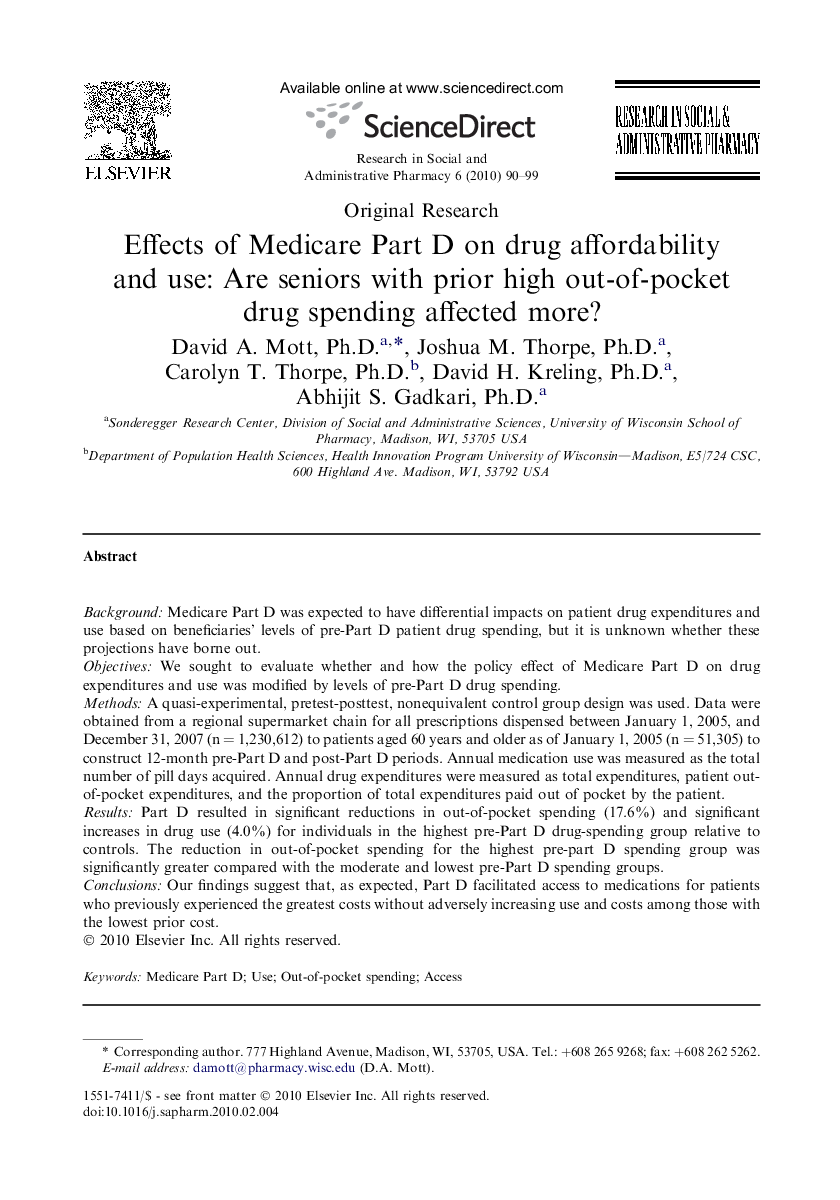| Article ID | Journal | Published Year | Pages | File Type |
|---|---|---|---|---|
| 2509117 | Research in Social and Administrative Pharmacy | 2010 | 10 Pages |
BackgroundMedicare Part D was expected to have differential impacts on patient drug expenditures and use based on beneficiaries' levels of pre-Part D patient drug spending, but it is unknown whether these projections have borne out.ObjectivesWe sought to evaluate whether and how the policy effect of Medicare Part D on drug expenditures and use was modified by levels of pre-Part D drug spending.MethodsA quasi-experimental, pretest-posttest, nonequivalent control group design was used. Data were obtained from a regional supermarket chain for all prescriptions dispensed between January 1, 2005, and December 31, 2007 (n = 1,230,612) to patients aged 60 years and older as of January 1, 2005 (n = 51,305) to construct 12-month pre-Part D and post-Part D periods. Annual medication use was measured as the total number of pill days acquired. Annual drug expenditures were measured as total expenditures, patient out-of-pocket expenditures, and the proportion of total expenditures paid out of pocket by the patient.ResultsPart D resulted in significant reductions in out-of-pocket spending (17.6%) and significant increases in drug use (4.0%) for individuals in the highest pre-Part D drug-spending group relative to controls. The reduction in out-of-pocket spending for the highest pre-part D spending group was significantly greater compared with the moderate and lowest pre-Part D spending groups.ConclusionsOur findings suggest that, as expected, Part D facilitated access to medications for patients who previously experienced the greatest costs without adversely increasing use and costs among those with the lowest prior cost.
